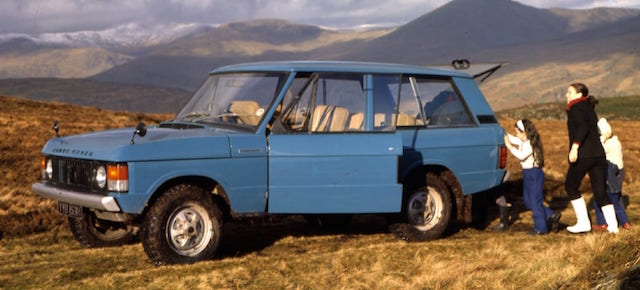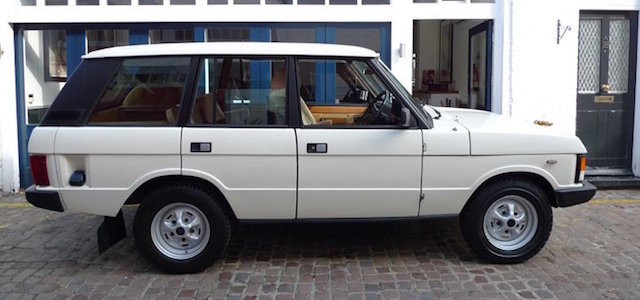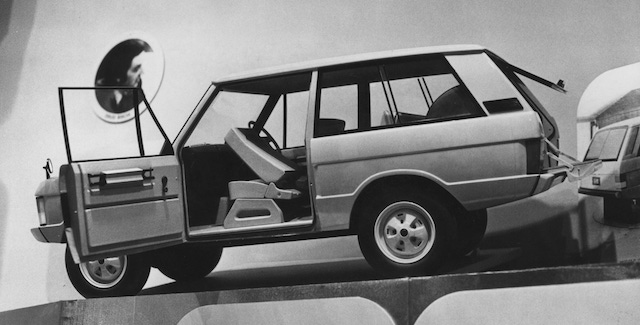
Jaguar Land Rover agents Motorcorp Distributors expects a handful of New Zealanders to buy the Range Rover Fifty, the limited-edition 50th anniversary model, priced at $250,000.
“We getting expressions of interest right now and we certainly hope to have three or four buyers,” said Ben Montgomery, Jaguar Land Rover operations manager. “Once we get deposits we will let the factory know of the orders.”
Production of the ‘Fifty’ will be limited to 1970 examples, in recognition of the year the original Range Rover was launched. Buyers can order either standard or long wheelbase models. Engines will be V8s, either a supercharged 5.0-litre petrol or turbocharged 4.4-litre diesel. A plug-in hybrid powertrain will also be available. “The V8 diesel will be the sweet spot for many people,” said Montgomery.
Most markets will have a choice of four colours: Carpathian Grey, Rosello Red, Aruba, and Santorini Black. But New Zealand buyers can also pick from ‘heritage’ colours –Tuscan Blue, Davos White, and Bahama Gold – from the original 1970 Range Rover catalogue.
A selection of two unique 22-inch wheel designs, exterior trim accents in Auric Atlas and a bespoke ‘Fifty’ script badge complete the look. Inside, the headrests, dashboard and illuminated kickplates also feature the script, where a plaque notes the car as ‘1 of 1970’ vehicles commissioned.
The first Range Rover was released in Britain 50 years ago this month, priced from £1998 (NZ$4000). Back then it was available in a two-door body only, but came with a permanent duel-range four-wheel-drive system, four-wheel disc brakes, a 3.5-litre V8 engine acquired from General Motors, a four-speed manual gearbox, and a 3500kg towing capacity.
The V8 was pretty much the same as the all-aluminium unit used in the Rover 3500 sedan, except for the twin carburettors and a lower 8.5:1 compression ratio to suit low octane petrol. Output in the Range Rover was 100kW at 4750rpm and 278Nm at 3000rpm.
The engine in the 3500 sedan had SU carburettors, but Range Rover engineers soon found the SUs were prone to starve the prototypes of fuel in off-road conditions, especially sideways on hills. The SUs were swapped for Zenith-Stromberg units.
Back then the Range Rover had no direct rival. It had been on the drawing board at Land Rover since the mid-sixties as a ‘100-inch station wagon’, a potential British version of America’s Jeep Wagoneer, the forerunner of the Jeep Grand Cherokee.
The 100-inch measurement was the length of the wheelbase. The design of the vehicle called for a box-section chassis, permanent four-wheel-drive, and a V8 engine. Designers and engineers toyed with the name Land Rover Ranger. But management rejected the moniker in December 1968 and approved Range Rover.
Land Rover – then part of British Leyland – built 26 prototypes, each badged Velar in an attempt to blindside media. The Velar name was resurrected on a Range Rover in 2017. Much of initial testing was done (above) in Morocco. One such prototype, registered YVB151H, belongs to the Dunsfold Collection, the world’s largest collection of historically important Land Rovers.
On June 1, 1970, British Leyland invited motoring journalists to a trial in Cornwall. The company had spent so much on launching the Triumph Stag earlier that year it had limited funds for the Range Rover’s promotion.
Autocar magazine raved: “What is so good about the Range Rover is the way it carries out its multiple functions, serving equally well as tug, load carrier, cross-country vehicle and, by no means least, as an ordinary car suitable even for commuting in heavy traffic.”
Within months, the waiting list for the Range Rover prompted a black market in new models. The brochure referred to the “seven-days-a-week luxury motor car for all business and domestic purposes”. They proved so versatile that they were soon part of the British police fleet.
The two-door was produced for 11 years before the four-door appeared. It made an early public appearance in 1982 in Papua New Guinea as one of the support vehicles for the off-road Camel Trophy event. Eight two-man teams (two each from West Germany, Holland, Italy, USA) had to make their way in two-door 3.5-litre Range Rovers over 1000km of inhospitable terrain.
For a time there the four-door was parked in my ‘backyard’– the compound that housed the newspaper I was editor of, one of the country’s two dailies. The office and its support buildings – the whole newspaper compound – were surrounded by a heavy gauge security fence, about four metres in height. Camel organisers hired available space in the compound before and after the rally to store the mix of Land Rovers and Range Rovers.
The four-door back then immediately stood out as a more complete vehicle. Truth be told, it was what Land Rover’s marketing people wanted in the first place, when the vehicle was first penned, in 1968. They reckoned the two-door was a “tragedy.”
Author James Taylor describes British Leyland’s neglect and lack of development funding in his book Range Rover First Generation: The Complete Story. Leyland undertook modifications “only when necessary”. It was aftermarket firms that devised many improvements, including the four-door version in 1981.
The 3.5-litre engine was in use until 1990, along with a 2.5-litre diesel from 1988. The petrol unit was bored out to 3.9-litres for the 1990 model year and later to 4.0-litres. February 1996 marked the demise of what had become known as the Range Rover Classic, following the launch of the second-generation Range Rover two years earlier.
Land Rover insiders will tell you the second-generation model was a disappointment, a bloated design prone to all sorts of reliability problems. It came with either 4.0-litre or 4.6-litre petrol engines, or a BMW sourced 2.5-litre diesel. The 4.6-litre was the least reliable. “Stay away from it, unless you can service it yourself, ” a Land Rover engineer told me.
Range Rover has always had its critics – mainly centred around reliability issues – but each of its four generations continued to phase in the latest technology: it was the first four-wheel-drive to feature anti-lock brakes, electronic traction control and automatic electronic air suspension. It was also the first to go on display (above) in the Louvre museum in Paris, where it was described as an “outstanding piece of modern sculpture”.
- There is no available record of the first Range Rover to land in New Zealand. The first Land Rover, however, appeared here in September 1949, imported by Wellington Motors. There is no known record of what happened to it either.






